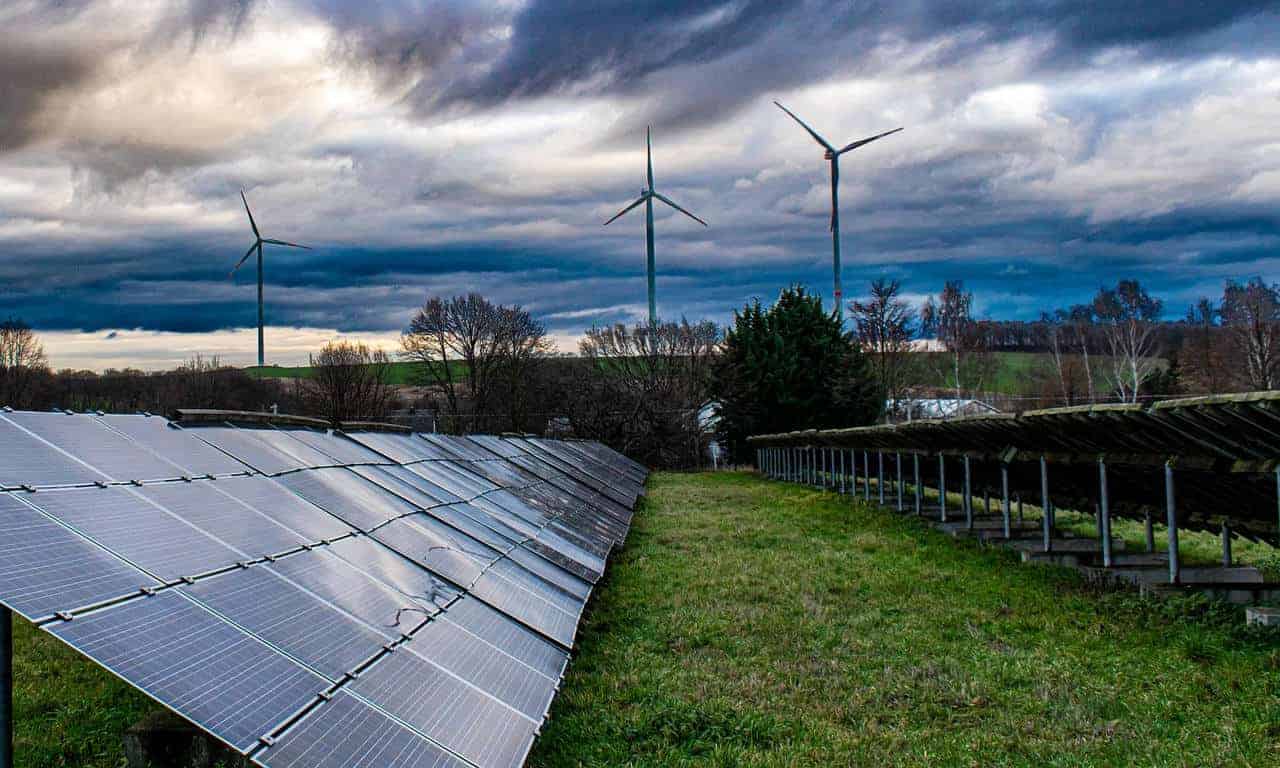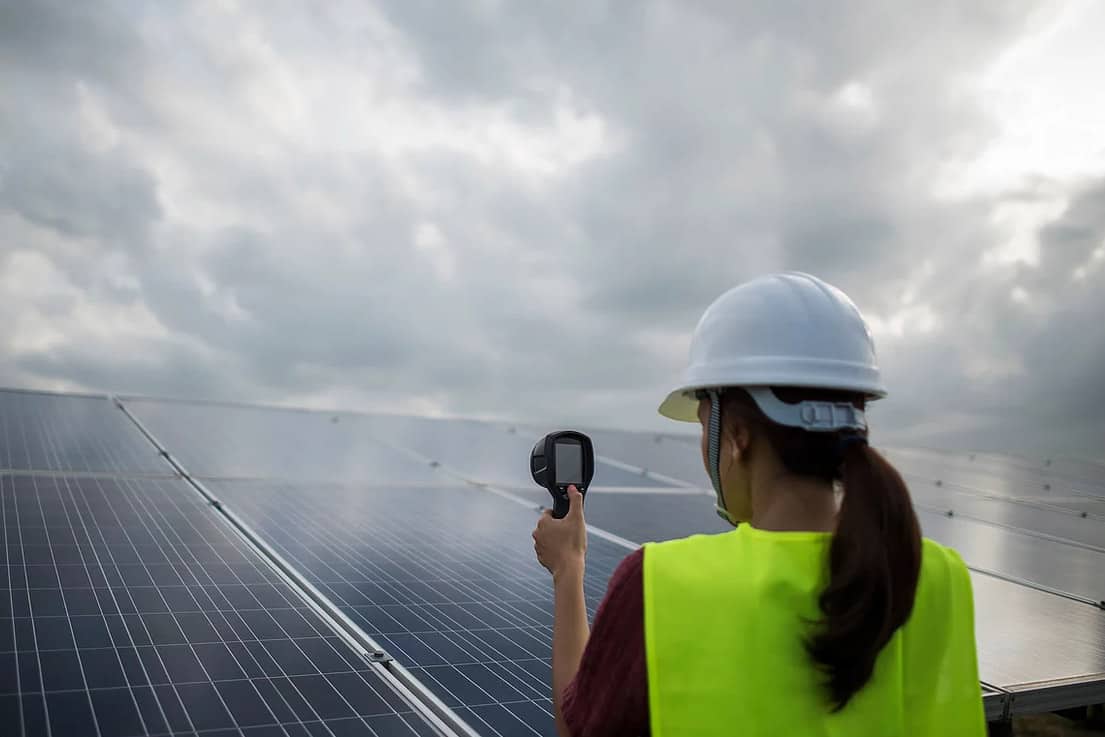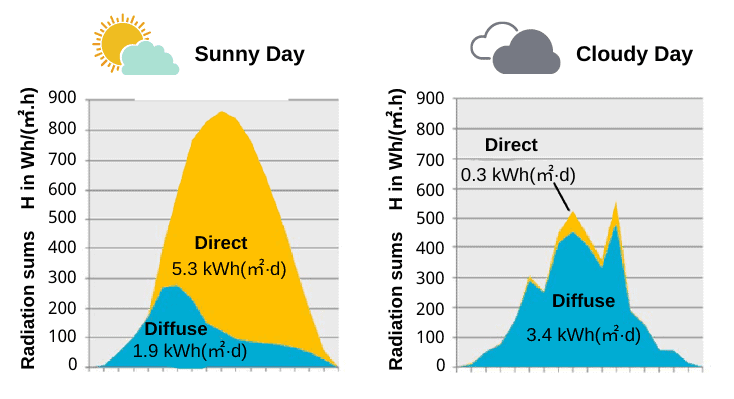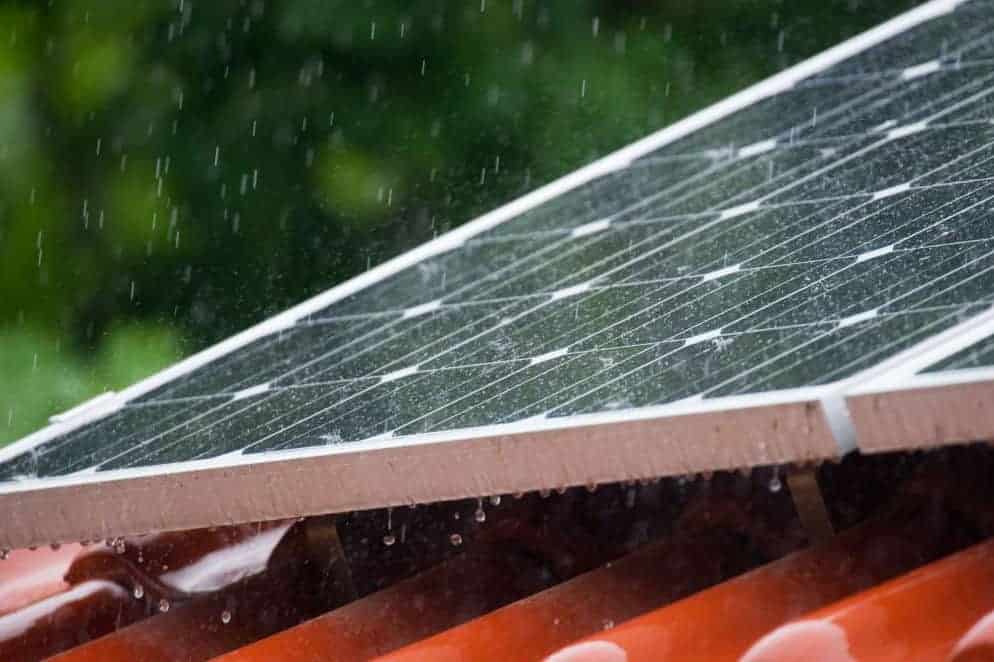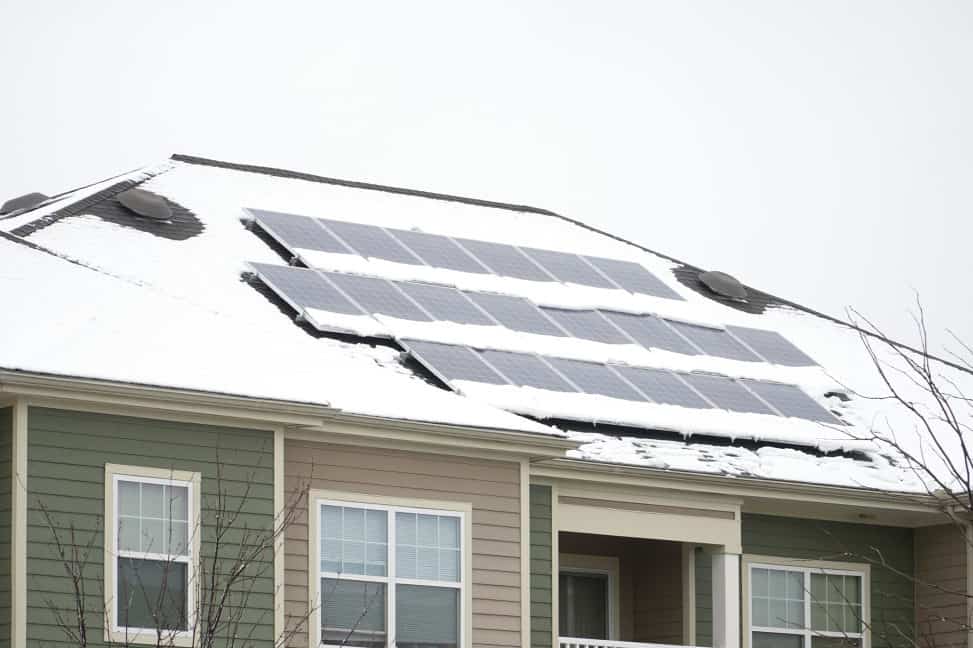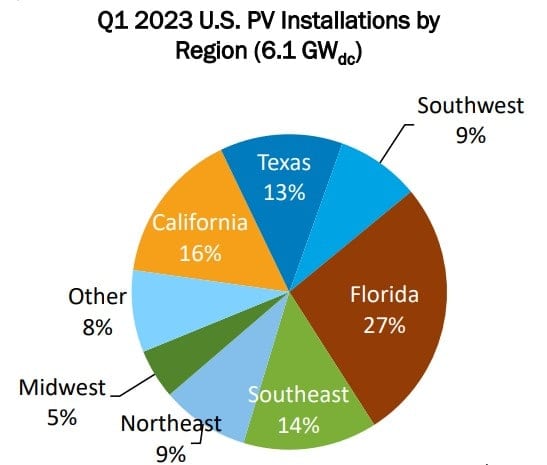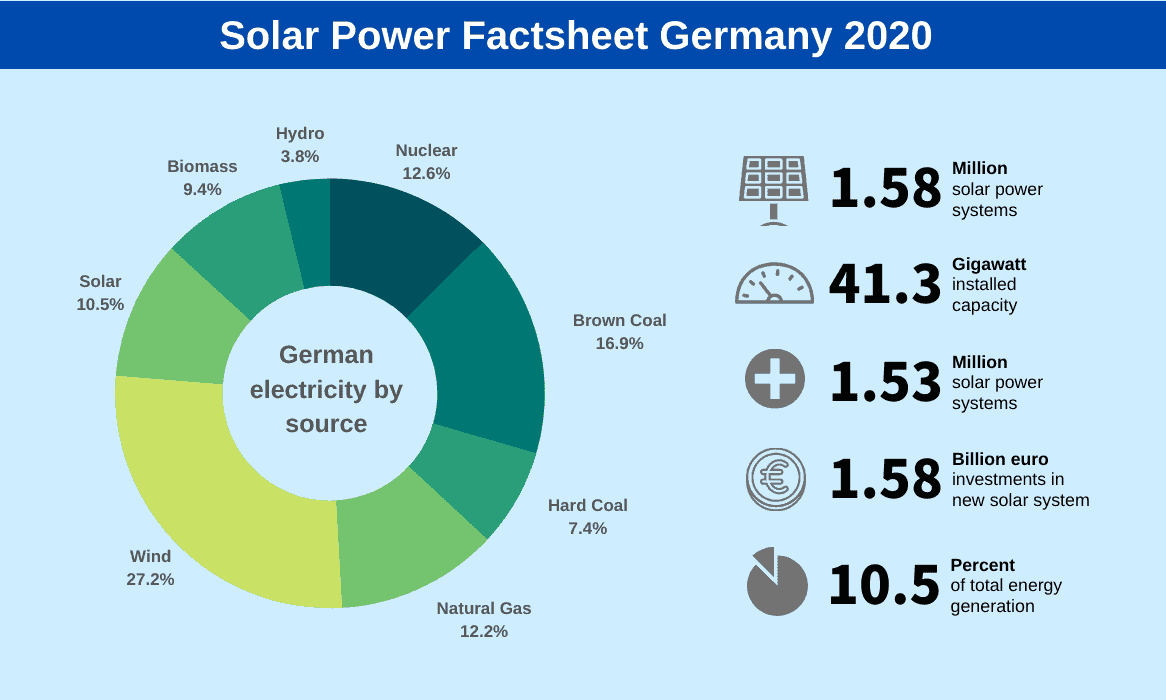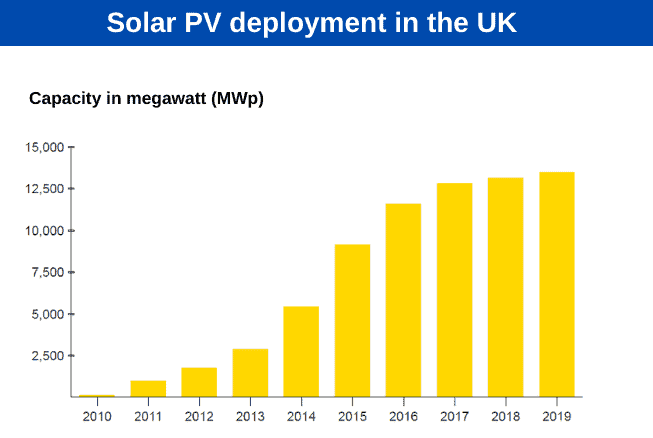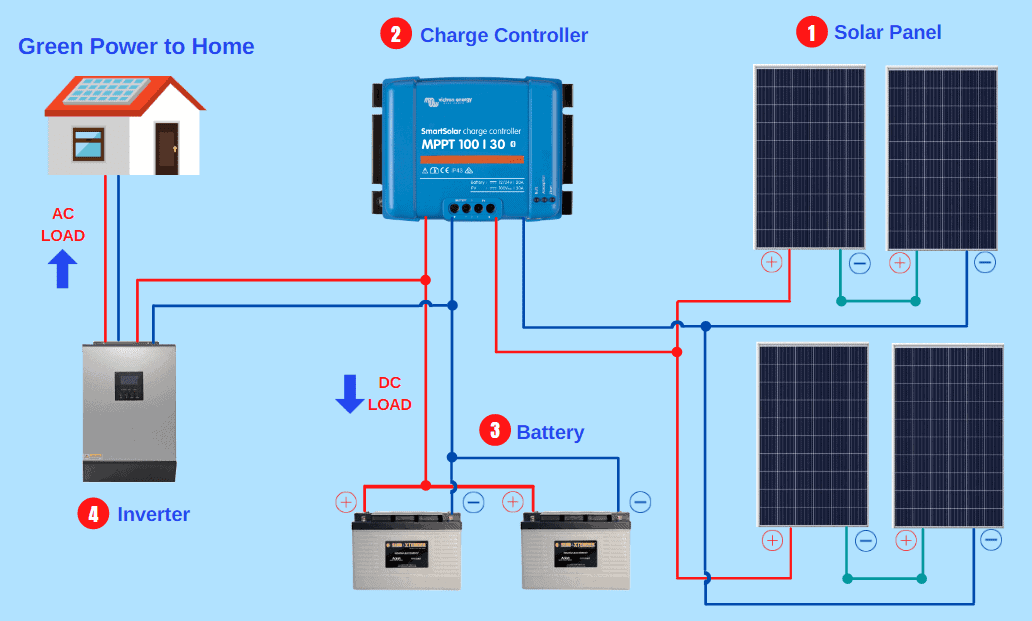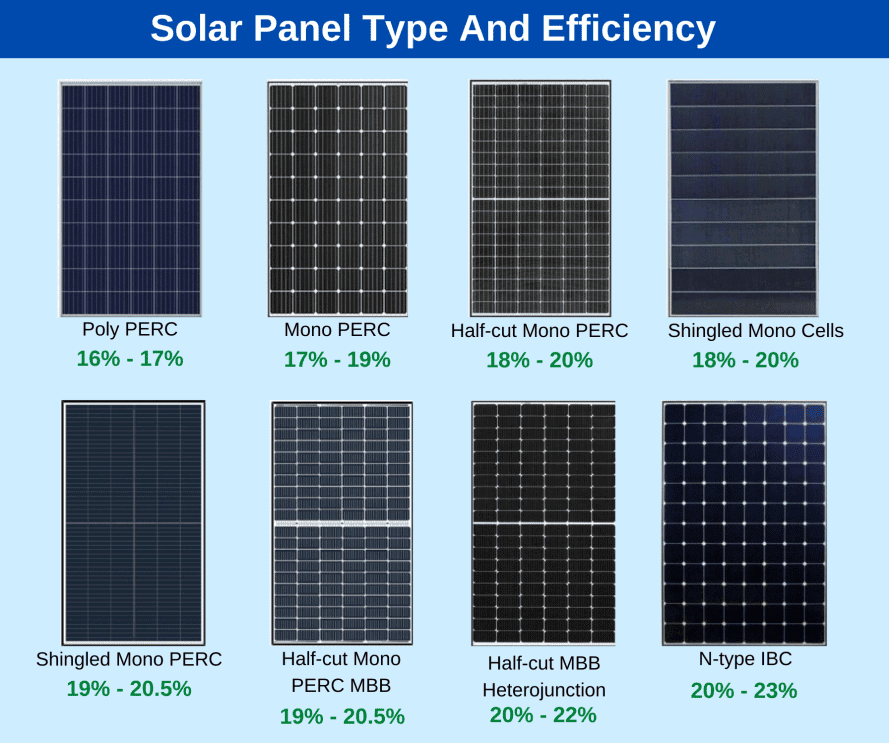Although your panels will be most efficient under a clear, blue sky, they can still perform on a rainy or cloudy day.
Of course, the amount of electricity they produce on rainy or cloudy days will be lower. The lower production is because anything that covers the panels prevents them from generating electricity efficiently.
That said, the weather is not the only factor that determines your panel’s performance. Other issues such as the panel type or its direction from the sun can affect how much energy your system generates.
Do solar panels work on cloudy or rainy days? Yes, and this guide will show you how.
The Optimum Temperature for Solar Panels
Contrary to expectations that solar panels are at their optimum performance when it’s warm, they work best when it’s cold.
Solar panels reach their optimum performance efficiency at 25°C or 77°F, which is considered the peak temperature for their operations. The temperature under which the panel’s efficiency is measured is referred to as the Standard Test Conditions. (For more detail Read: How Hot Do Solar Panels Get? – Does Temperature Affect Solar Panels?)
The electrons usually have no activity at this optimum temperature until they get extra energy either from sunlight or heat.
As the temperatures rise, the solar panels produce less electricity. For instance, if the conditions become 80°F hotter, the panels will be less efficient.
Why Panels Work On Cloudy and Rainy Days
You might be worried about solar panels powering your home on cloudy and rainy days. Your concerns may be more significant if you live in an area like northeast Florida, where it rains a fair amount of the year.
Although the panel’s efficiency might be affected, you will still get some electricity from your panels. You can even get between 10% and 25% of your panel’s total capacity on a rainy or cloudy day.
How do solar panels work on cloudy or rainy days?
Sunrays can still pierce through the clouds and produce electricity. Modern photovoltaic solar panels are designed in such a way that they absorb all types of light, whether reflected or weak. The panels convert the sun’s light, not the sun’s heat, into electricity.
For instance, if the clouds partially cover 30% of your solar panel, energy production will only be lowered by this percentage.
Another reason solar panels still work on overcast days is due to infrared light. It has a longer wavelength compared to visible light. Due to this, infrared light penetrates clouds faster than it would clear skies.
Besides, solar panels don’t necessarily rely on direct sunlight. They can also harness light that bounces off surfaces and still generate power from this.
The edge-of-cloud effect
Surprisingly, clouds might make your solar experience better. Why? They can reflect the rays from the sun or amplify them to boost your panels’ output.
When clouds partially cover the sun or when the sun is about to appear from behind a cloud, the result is a sudden increase in energy. This increase is referred to as the edge-of-cloud effect. Usually, when this happens, the panels produce more power than usual.
The edge-of-cloud effect is most noticeable when there are clear, blue skies. To take full advantage of the cloud edge effect, make sure your panels are correctly angled.
You can use a solar controller to track this excess energy.
How efficient are solar panels on rainy days?
Remember, you can still get up to 25% of electricity on rainy days. If you have a 1kW solar system that produces 5kWh of electricity on a Summer day, these same panels will generate 1.25kWh of energy when it’s very cloudy.
What’s more, rain is not necessarily a bad thing for your panels. Why? It can wash out debris and dirt that tends to build up on solar panels, blocking out the sun.
Research shows that dust can lower your panel’s performance by up to 17%, and it can be cumbersome to clean your panels frequently. So, why not let the rain do the cleaning for you?
Therefore, the rain itself does not affect the panels’ efficiency but how cloudy it is.
Hopefully, in the future, the rains will also produce energy from solar panels. Although it’s still in the works, hybrid solar panels are being designed to collect energy from the sun and the rain.
How? The force of raindrops as they hit the panels is converted into electricity.
Can snow stop your panels from working?
Snow tends to block sunlight because it piles up on your panels. But, even in the snow, you still stand to get some electricity from your solar panels.
How? If it gets warmer following a snowy day, the snow will melt and glide off your panels. As a result, your panels will be clear and have better exposure to sunlight.
Also, if your panels are tilted, it is unlikely that snow will accumulate on them.
Yes, solar panels work on cloudy days, and there are numbers to back that up
So, you live in a not-so-sunny state, and you’re wondering, do solar panels work on cloudy and rainy days?
US cities that rank high
There are many US states that have record-high consumption of solar power despite having less sunlight. For instance, solar power use has gone up four times in New York since 2014. However, the surprising thing is that New York has less sunlight than 18 states that rank highly for solar use. New York hopes to power over 200,000 homes by 2030.
Besides, it’s the cost of electricity that helps you determine whether solar is a worthwhile investment. In a city like San Francisco, where the weather is not always sunny, the cost of power is high. This factor, therefore, makes solar worth every dollar.
What about cities like Portland, Oregon, which is famous for overcast weather? It has still made it to the US list of top 20 solar cities.
The Germany case
Another example is cold, rainy Germany. Over 50% of Germany’s electricity is powered through renewable energy. Germany has installed over 1.5 million solar systems, beating the US by over five times.
UK’s increasing usage
Known for its wet weather, the UK is still making solar milestones yearly.
The UK is doing so well that solar use has driven down national grid power demands while still leading to price reductions.
The growing demand for solar power has also seen the entrance of Ikea and other major companies.
How to Navigate Rainy Days
Pull from the grid
If you’re connected to a grid, you will quickly get through the rainy days when your panels are underperforming.
How? The answer is Net Metering. If your home is connected to the grid, you’ve probably been sending back all the extra energy your panels make. These credits will save you on a rainy day.
Use of batteries
Another way is through the use of batteries. If you have good batteries, you can power up your home with the stored energy when it rains. However, batteries that are charged continuously and drained are prone to damage. Therefore, their lifespan is short.
Any unused energy from your solar panels is usually stored in batteries. Some manufacturers can offer up to 10 years of warranty on batteries so that you can replace them without much of a fuss.
Avoid shady areas
If you can, try not to install your solar panel in an area where it’s likely to be blocked from the sun. Keep off places such as under trees, plants, or tall buildings.
Angling the panels towards sunlight will help you maximize on sunny days. You can store this energy on your battery or send the excess to the grid to help you on rainy and cloudy days.
Opt for monocrystalline panels
Monocrystalline panels are considered to be more efficient than polycrystalline ones. They are considered to have up to 20% efficiency. Why? Their cells are purer, and their electrons can flow more freely, creating more energy.
However, they tend to be costlier than most people can afford.
Polycrystalline ones are still good for bad days. But, their performance is slightly lower than monocrystalline panels. Their efficiency rate is 15%.
The good news is that polycrystalline panels are cheaper than their monocrystalline counterparts. (For more detail Read: 12 Solar Panel Facts You Probably Didn’t Know)
Adjust consumption
If your solar panels produce less electricity than you need, you can adjust your consumption for that period.
Conclusion
If you’ve been wondering, do solar panels work on cloudy or rainy days? You now know the answer is yes.
Although the production goes slightly lower depending on cloud cover, you can still get 10-25% power.
Solar panel designs allow them to tap into any light. After all, it is the sunlight, not the sun’s heat, that powers them.
Think about cities like New York, which are in the top 20 categories of solar usage in the US despite their lousy weather. Or countries like Germany, which power almost everything with solar.
Besides, with the right solar panels, such as monocrystalline ones, your efficiency will be top-notch. On top of that, you can still install batteries to save energy for a rainy day.
Forget the weather and install those panels.

